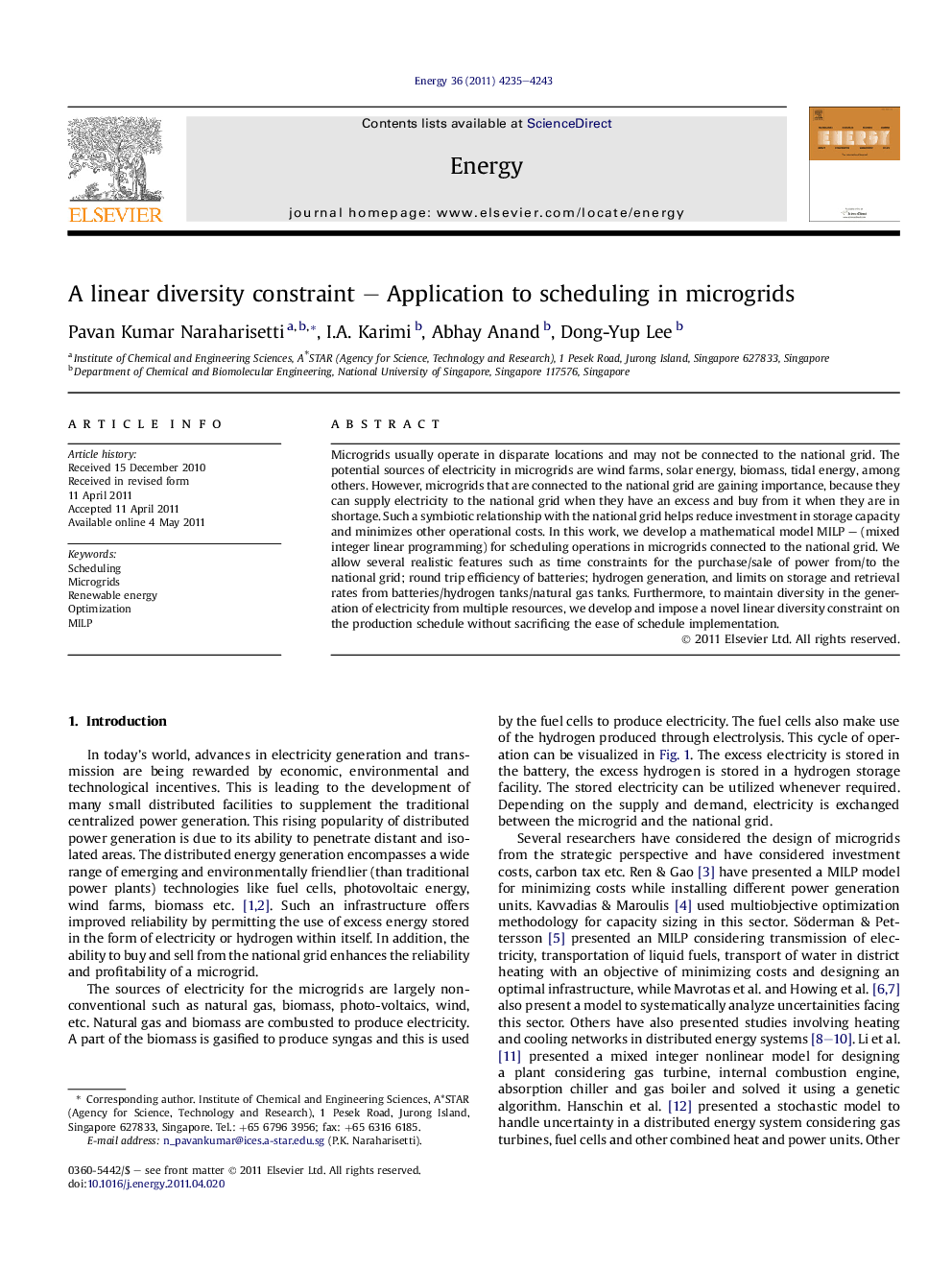| Article ID | Journal | Published Year | Pages | File Type |
|---|---|---|---|---|
| 1734184 | Energy | 2011 | 9 Pages |
Microgrids usually operate in disparate locations and may not be connected to the national grid. The potential sources of electricity in microgrids are wind farms, solar energy, biomass, tidal energy, among others. However, microgrids that are connected to the national grid are gaining importance, because they can supply electricity to the national grid when they have an excess and buy from it when they are in shortage. Such a symbiotic relationship with the national grid helps reduce investment in storage capacity and minimizes other operational costs. In this work, we develop a mathematical model MILP – (mixed integer linear programming) for scheduling operations in microgrids connected to the national grid. We allow several realistic features such as time constraints for the purchase/sale of power from/to the national grid; round trip efficiency of batteries; hydrogen generation, and limits on storage and retrieval rates from batteries/hydrogen tanks/natural gas tanks. Furthermore, to maintain diversity in the generation of electricity from multiple resources, we develop and impose a novel linear diversity constraint on the production schedule without sacrificing the ease of schedule implementation.
► A linear diversity constraint that can be used in MILP models. ► A detailed/rigorous mathematical model for scheduling in microgrids connected to the national grid by incorporating various realistic features. ► Time constraints for the purchase/sale of power from/to the national grid. ► Round trip efficiency of batteries and hydrogen generation. ► Limits on storage and retrieval rates from batteries/hydrogen tanks/natural gas tanks.
